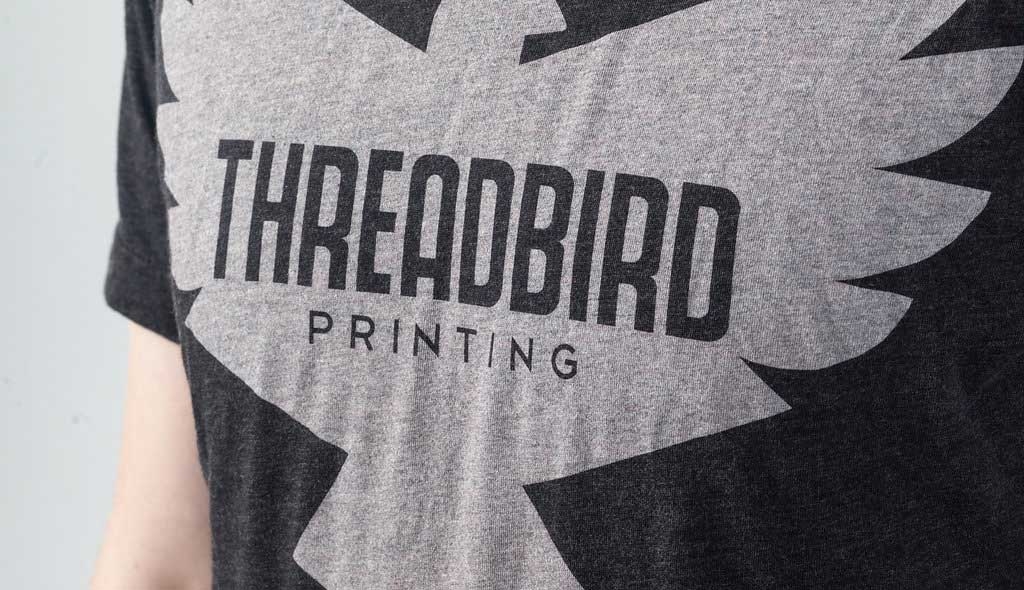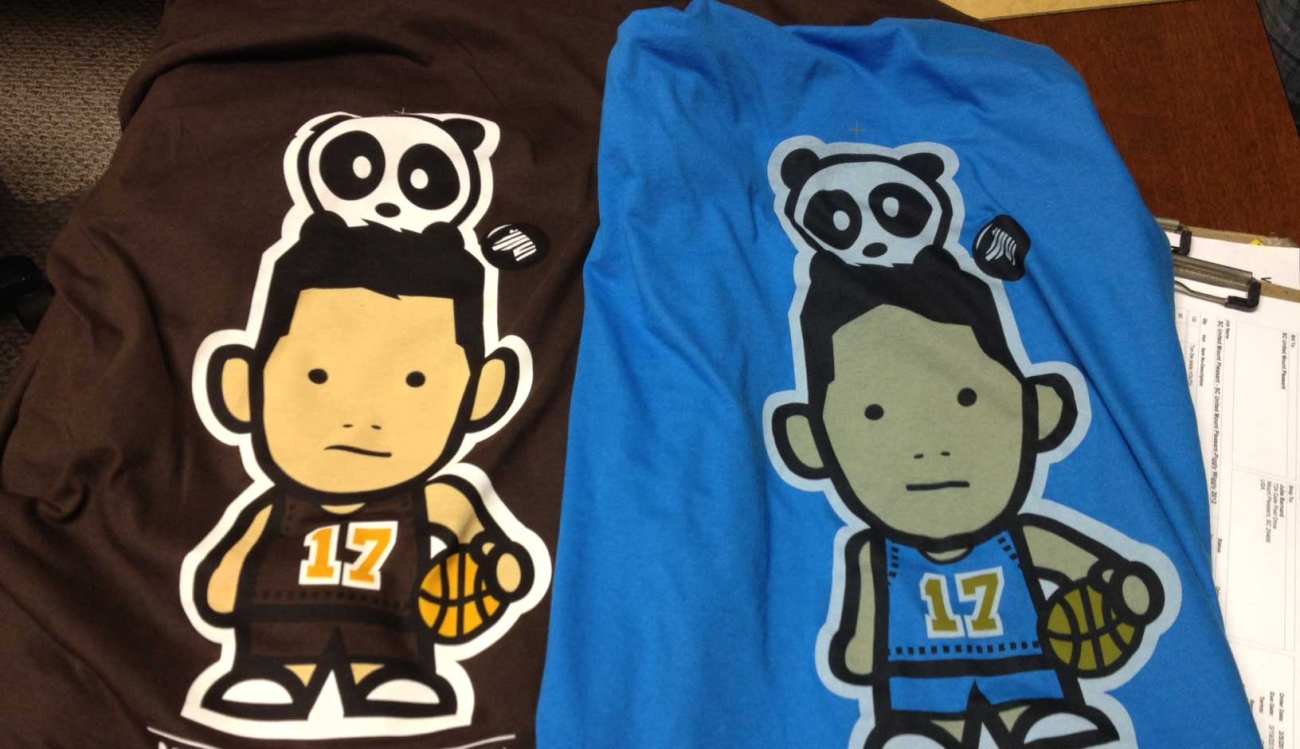When using specific garment types, inks or garment colors, Pantone (PMS) color matching is not possible. This is a case-by-case scenario and we've done our best to cover some instances below.
When Using Specific Garment Types (Fabrics)...
The use of tri-blend or blended garments can cause the colors in your final printed design to vary from what you see in the mock when you use waterbased or discharge ink. The ink typically takes on the color of the garment and can appear muted. If you’re going for a vintage-y or less vibrant effect, consider using waterbased or discharge inks.
Tri-Blend garments also have a unique blend of materials that cause the ink to not permeate the fabric as well as 100% cotton garments. We do not recommend printing on tri-blend garments if you are wanting vibrant colors or need to match specific pantone inks.
White Waterbase print looks vintage on Triblend garment
When Using Waterbase or Discharge Inks...
Due to the nature of waterbase and discharge printing, it is not possible to match colors printed to the pantone colors used. Certain garment brands, colors, and fabrics perform better with these ink types than others - please reach out to your customer service representative for more information.
When Using Specific Garment Colors...
Avoid the following colors when printing with Discharge or Premium Standard inks: Kelly Green, Red, Royal Blue, Lapis, Cobalt, Purple, Forest, Teal, & Turquoise. If you are going to print on these shirt colors, please note that lighter ink colors such as white or yellow will be influenced by the shirt color remaining underneath.
Turquoise shirt color shows through print
I printed on the same ink type/garment type combo in the past - will the final product look exactly the same as last time?
If you printed waterbase/discharge on a certain garment brand in the past, the final product may differ from your current order order. This is due to the manufacturing process of the shirt itself. It’s possible to have a batch of 100% cotton garments, for example, that waterbase/discharge differently than any other given batch.

